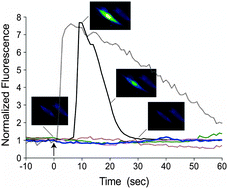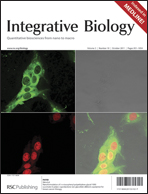Vascular air embolism resulting from too rapid decompression is a well-known risk in deep-sea diving, aviation and space travel. It is also a common complication during surgery or other medical procedures when air or other endogenously administered gas is entrained in the circulation. Preventive and post-event treatment options are extremely limited for this dangerous condition, and none of them address the poorly understood pathophysiology of endothelial response to intravascular bubble presence. Using a novel apparatus allowing precise manipulation of microbubbles in real time fluorescence microscopy studies, we directly measure human umbilical vein endothelial cell responses to bubble contact. Strong intracellular calcium transients requiring extracellular calcium are observed upon cell-bubble interaction. The transient is eliminated both by the presence of the stretch activated channel inhibitor, gadolinium, and the transient receptor potential vanilliod family inhibitor, ruthenium red. No bubble induced calcium upsurge occurs if the cells are pretreated with an inhibitor of actin polymerization, cytochalasin-D. This study explores the biomechanical mechanisms at play in bubble interfacial interactions with endothelial surface layer (ESL) macromolecules, reassessing cell response after selective digestion of glycocalyx glycosoaminoglycans, hyaluran (HA) and heparin sulfate (HS). HA digestion causes reduction of cell-bubble adherence and a more rapid induction of calcium influx after contact. HS depletion significantly decreases calcium transient amplitudes, as does pharmacologically induced sydencan ectodomain shedding. The surfactant perfluorocarbon Oxycyte abolishes any bubble induced calcium transient, presumably through direct competition with ESL macromolecules for interfacial occupancy, thus attenuating the interactions that trigger potentially deleterious biochemical pathways.

You have access to this article
 Please wait while we load your content...
Something went wrong. Try again?
Please wait while we load your content...
Something went wrong. Try again?


 Please wait while we load your content...
Please wait while we load your content...